How to protect your Mac
open allWhat for: So you do not get hacked.
If you use a short or easy-to-guess password, hackers will be able to crack it and gain access to your computer. A long and complex password is more secure. A strong password complies with the following requirements:
- Is at least 8 characters long;
- Contains lowercase and uppercase letters, numbers, and special characters ($, @, etc.);
- Is not an actual word or easy-to-guess phrase;
- Is not the same as for any other account, including your Apple ID password;
- Does not consist of information that strangers could easily find out (your name, date of birth, pet's name, and so forth — or those of your friends or relatives).
To change your current password:
- Open the Apple menu by clicking the Apple emblem in the upper-left corner of the screen;
- In the drop-down list, select System Preferences;
- Go to the Users & Groups section;
- If you previously enabled password protection for system-wide settings, the system will offer to unlock the settings. Enter your passcode or use your Touch ID to continue;
- Click the information button next to your user name;
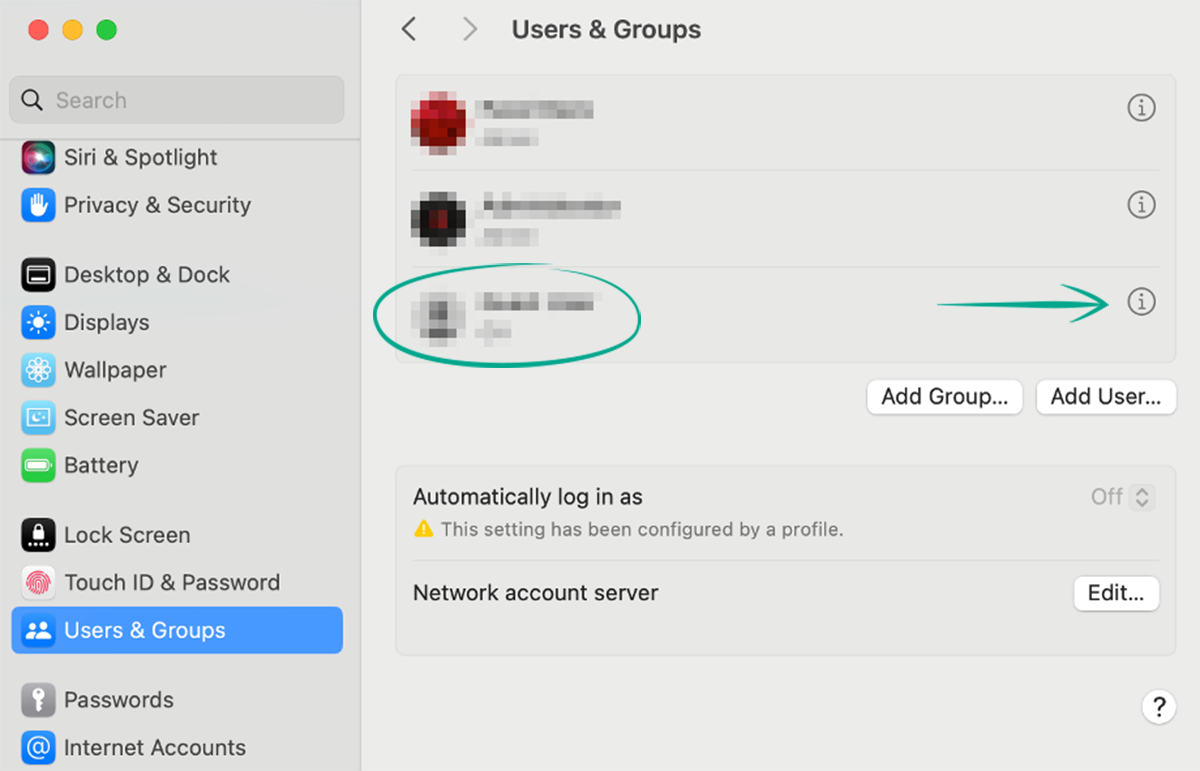
- Click Change;
- Enter your current password, and then type in a new password in New Password and Verify;
- You can optionally create a password hint in case you lose your password. If you forget your password, you can click the question mark in the login field. After three incorrect password attempts, the hint will appear to help you remember your password. The hint should be something you can easily remember, but don't make it too easy for others to figure out;
- Click Change password;
- Click OK.
What for: To prevent strangers from gaining access to the system while you are away.
If you are not using the computer for a certain amount of time, macOS can lock it. In this case, the screen will show a login window and you will have to enter your password again to continue working on the computer. The sooner the computer is locked, the less chance that someone else will be able to use it.
To configure the time to wait before locking the computer:
- Open the Apple menu by clicking the Apple emblem in the upper-left corner of the screen;
- In the drop-down list, select System Preferences;
- Go to the Privacy & Security section;
- If you previously enabled password protection for system-wide settings, the system will offer to unlock the settings. Enter your passcode or use your Touch ID to continue. Click Advanced... in the bottom right corner of the window;
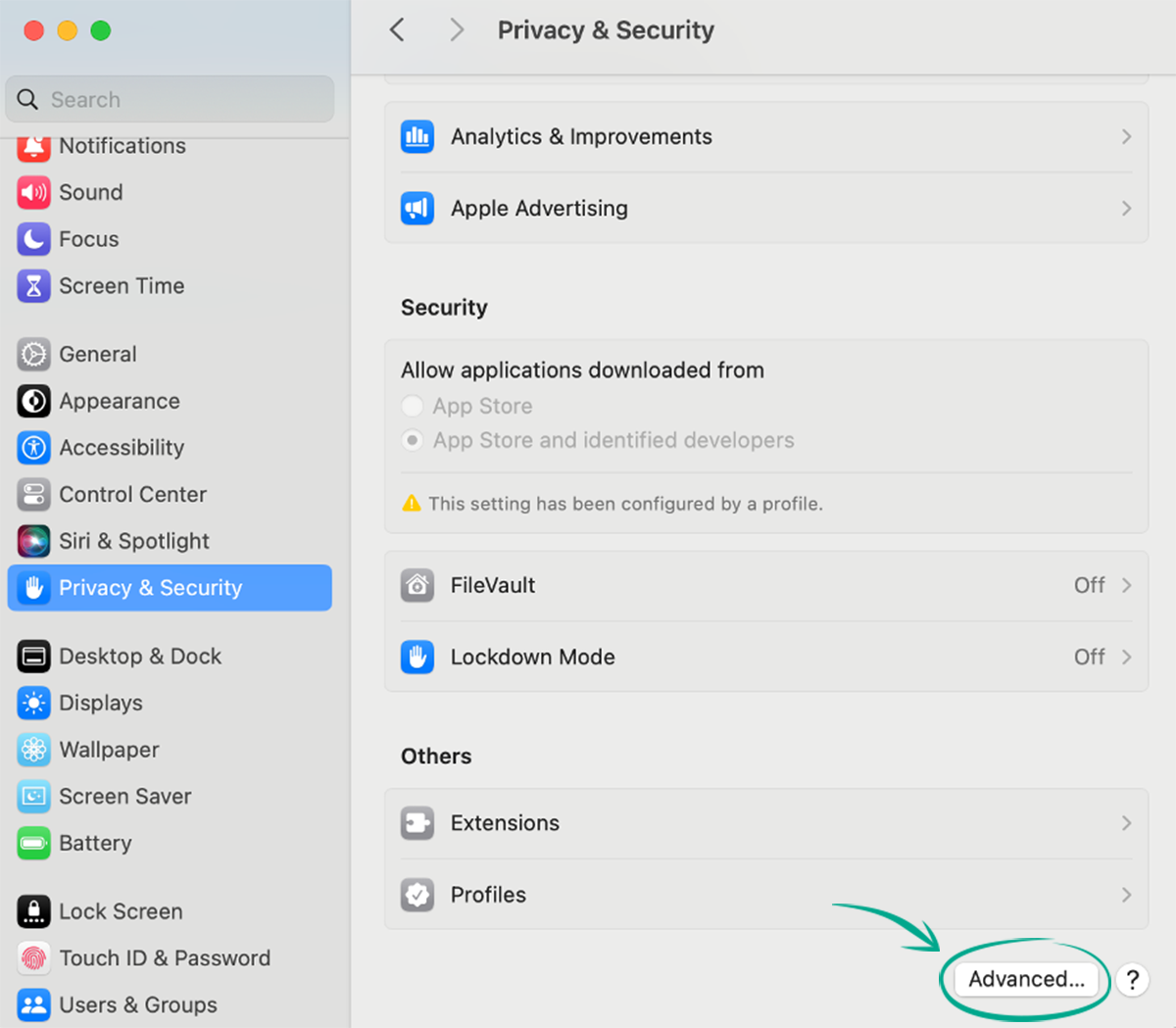
- Turn on Log out automatically after inactivity and set a time interval that works best for you;
- Click Done.
You can also configure the computer to lock when it goes to sleep: Here you can choose how long the computer will be in sleep mode before it asks you for a password when you attempt to unlock it.
- Open the Apple menu by clicking the Apple emblem in the upper-left corner of the screen;
- In the drop-down list, select System Preferences;
- Go to Lock Screen;
- If you previously enabled password protection for system-wide settings, the system will offer to unlock the settings. Enter your passcode or use your Touch ID to continue. Click the drop-down list next to Require password after screen saver begins or display is turned off and select a time interval that suits you.
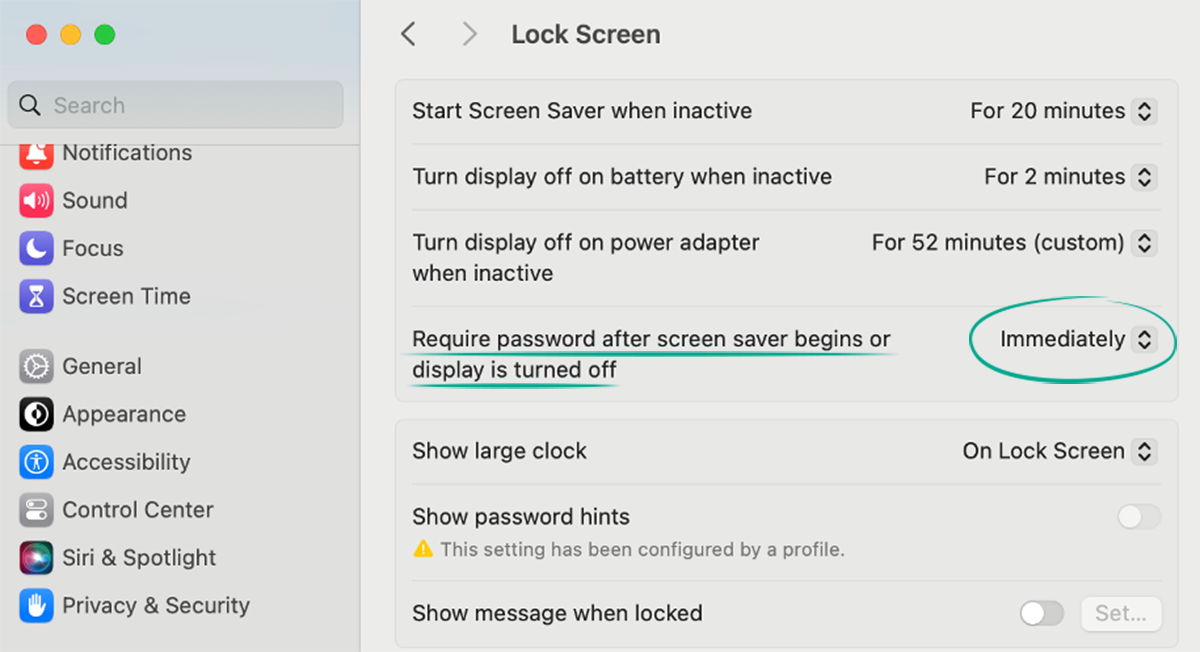
If you set an interval that is too large and leave your computer unattended, other people will be able to use it.
What for: So that no one can change important settings on your computer.
If there are other people using your computer, you can prevent them from changing the system and security settings.
- Open the Apple menu by clicking the Apple emblem in the upper-left corner of the screen;
- In the drop-down list, select System Preferences;
- Go to the Privacy & Security section;
- If you previously enabled password protection for system-wide settings, the system will offer to unlock the settings. Enter your passcode or use your Touch ID to continue. Click Advanced... in the lower right corner of the window;
- Turn on Require an administrator password to unlock each System Settings pane;
- Click Done.
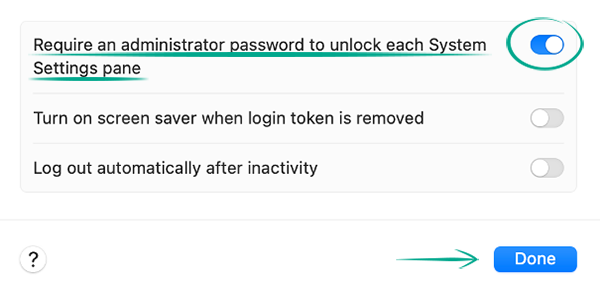
What for: To find your computer or erase its data in case it is lost or stolen.
The Find My Mac service will help you find your computer in case it is lost. You can use it to not only determine the location of your device and turn on its alarm, but also to remotely lock it or wipe its memory. This protects your data in case your laptop is stolen.
Activation Lock is also enabled when the Find My Mac service is turned on. This feature prevents someone from signing in to your system with a different Apple ID, turning off the Find My Mac feature, or wiping the memory without Apple ID password confirmation. That means if your computer ends up in someone else's hands, they will not be able to use it or sell it (except maybe for spare parts), as well as to disable search and lock functions.
Then you can find, lock, or wipe a lost or stolen computer by using the built-in Find My app on any other Apple device or at iCloud.com.
Please keep in mind that your Apple ID account credentials are also deleted along with the files when the drive is formatted, so in this case you will not be able to see the location of your computer. Therefore, use this option in extreme cases only.
However, when the lock is enabled, your Apple ID login and password are saved on Apple servers linked to your device ID. So, even after you erase all the data you will be able to unlock your lost and found Mac if you enter your Apple ID credentials on it.
The device search feature works even without Internet access and if location services are turned off. In this case, the computer sends a signal over Bluetooth that other nearby Apple devices receive. After receiving this signal, these devices send their location to Apple and the company forwards this data to your account. Using this feature, you will be able to see the approximate location of your computer in the Find My app.
To enable the Find My Mac feature:
- Open the Apple menu by clicking the Apple emblem in the upper-left corner of the screen;
- In the drop-down list, select System Preferences;
- Go to Internet Accounts;
- Select the iCloud account:
- If you don't have an iCloud account, click Add Account...;
- Type in your credentials and click Next;
- Check the box to say you've read the Terms and Conditions and click Accept;
- Enter the verification code the system has sent to the device you registered for two-factor authentication.
- Allow Apple to track your location. Select Find My Mac under Apps Using iCloud. If you can't see it on the list, click Show More Apps...;
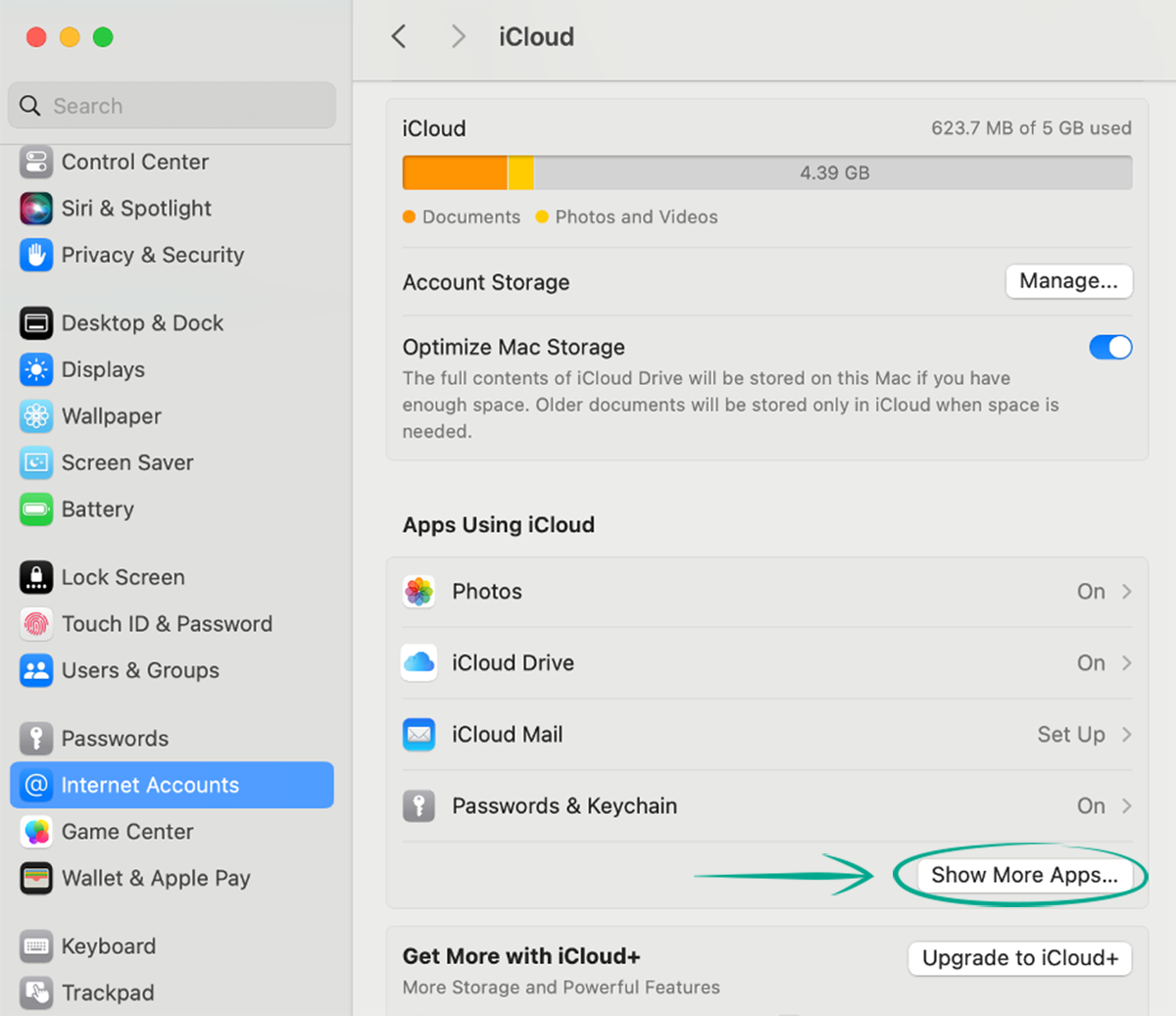
- Click Turn on;
- Make sure that the Find My Network function is enabled;
- Click Done.
If you don't want to rely on unfamiliar Apple gadgets, grant Find My Mac access to your location:
- Open the Apple menu by clicking the Apple emblem in the upper-left corner of the screen;
- In the drop-down list, select System Preferences;
- Go to the Privacy & Security section;
- If you previously enabled password protection for system-wide settings, the system will offer to unlock the settings. Enter your passcode or use your Touch ID to continue. Under Privacy, select Location Services;
- Turn on Location Services;
- Click Details... next to System Services;
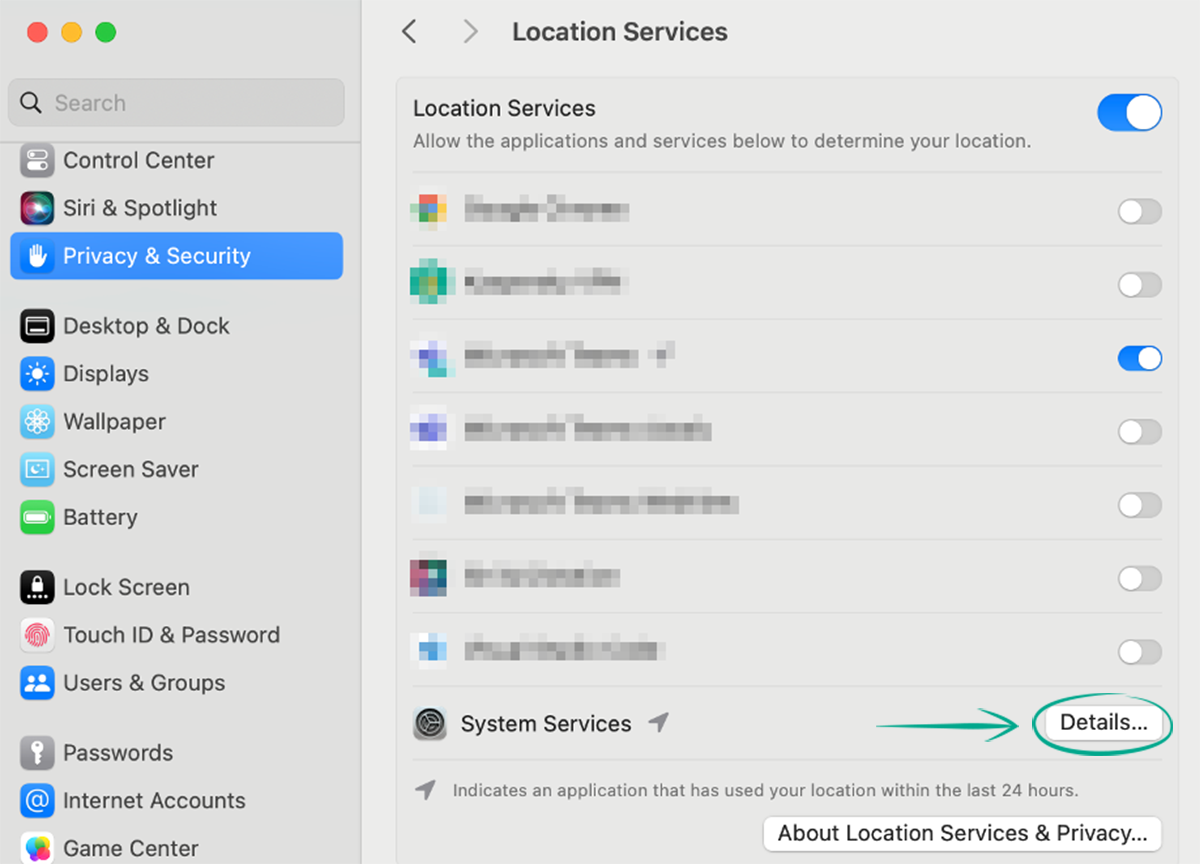
- Turn on Find My Mac;
- Click Done.
How to protect your Apple ID
open allWhat for: To prevent your data and devices from being hacked.
An Apple ID account lets you synchronize music, photos, contacts, and other data on different devices. If your account is hacked, criminals will gain access to all of that data. Once they have access to your Apple ID, they can also remotely lock your device or format your hard drive.
Make sure that your account is protected by a strong password that complies with the following requirements:
- Is at least 8 characters long;
- Contains lowercase and uppercase letters, numbers, and special characters ($, @, etc.);
- Is not an actual word or easy-to-guess phrase;
- Is not the same as your passwords for any other accounts;
- Does not consist of information that strangers could easily find out (your name, date of birth, pet's name, and so forth — or those of your friends or relatives).
To change your Apple ID password on a Mac computer:
- Open the Apple menu by clicking the Apple emblem in the upper-left corner of the screen;
- In the drop-down list, select System Preferences;
- Click the user name in the upper left corner of the window;
- Go to Sign in & Security;
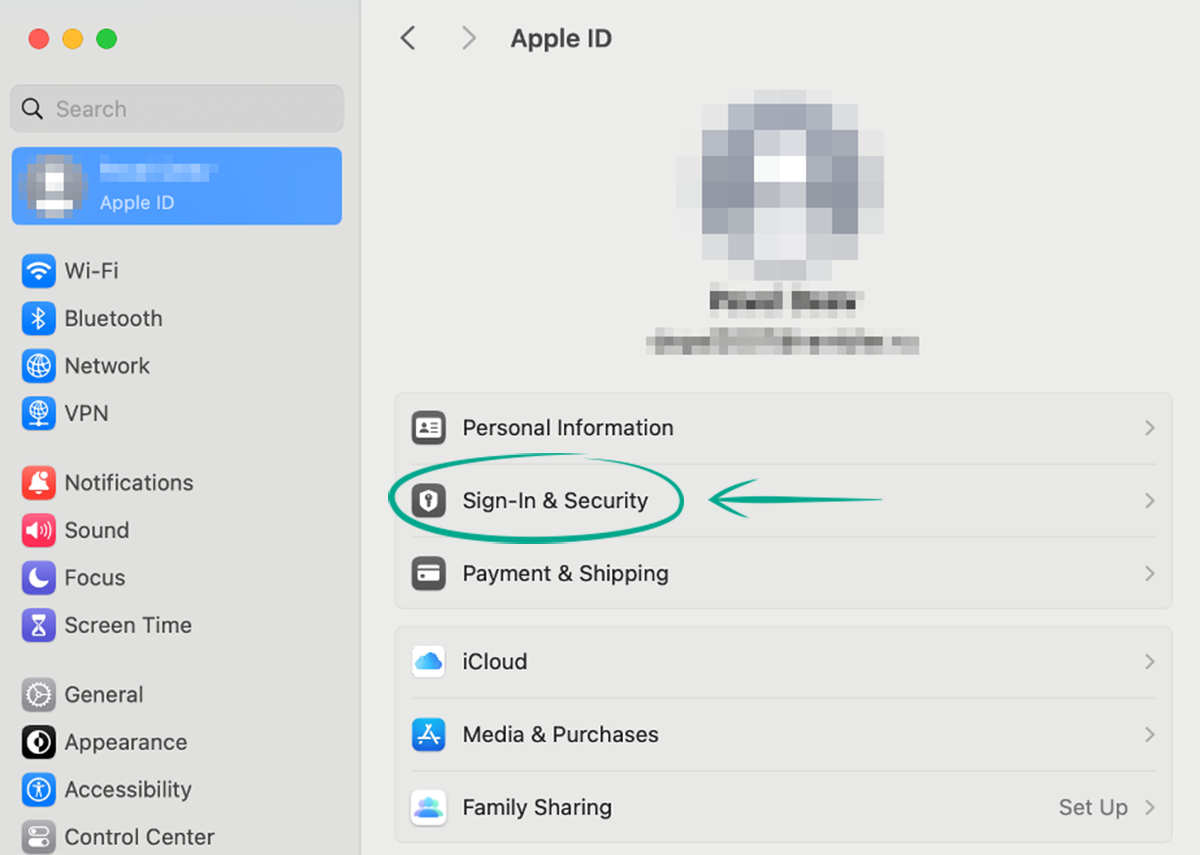
- Click Change Password...;
- Enter the current password for the computer account;
- Enter a new password and confirm it;
- Click Change.
You can also change or reset your Apple ID password on the Apple website.
What for: So you definitely don't get hacked.
Two-factor authentication helps provide additional security for your Apple ID. If you enable it, the system will prompt you for a one-time code each time you attempt to sign in from a new device. Every gadget where you are authenticated will get a notification as well.
- Open the Apple menu by clicking the Apple emblem in the upper-left corner of the screen;
- In the drop-down list, select System Preferences;
- Click the user name in the upper left corner of the window;
- Select Sign-In & Security;
- Select Two-Factor Authentication;
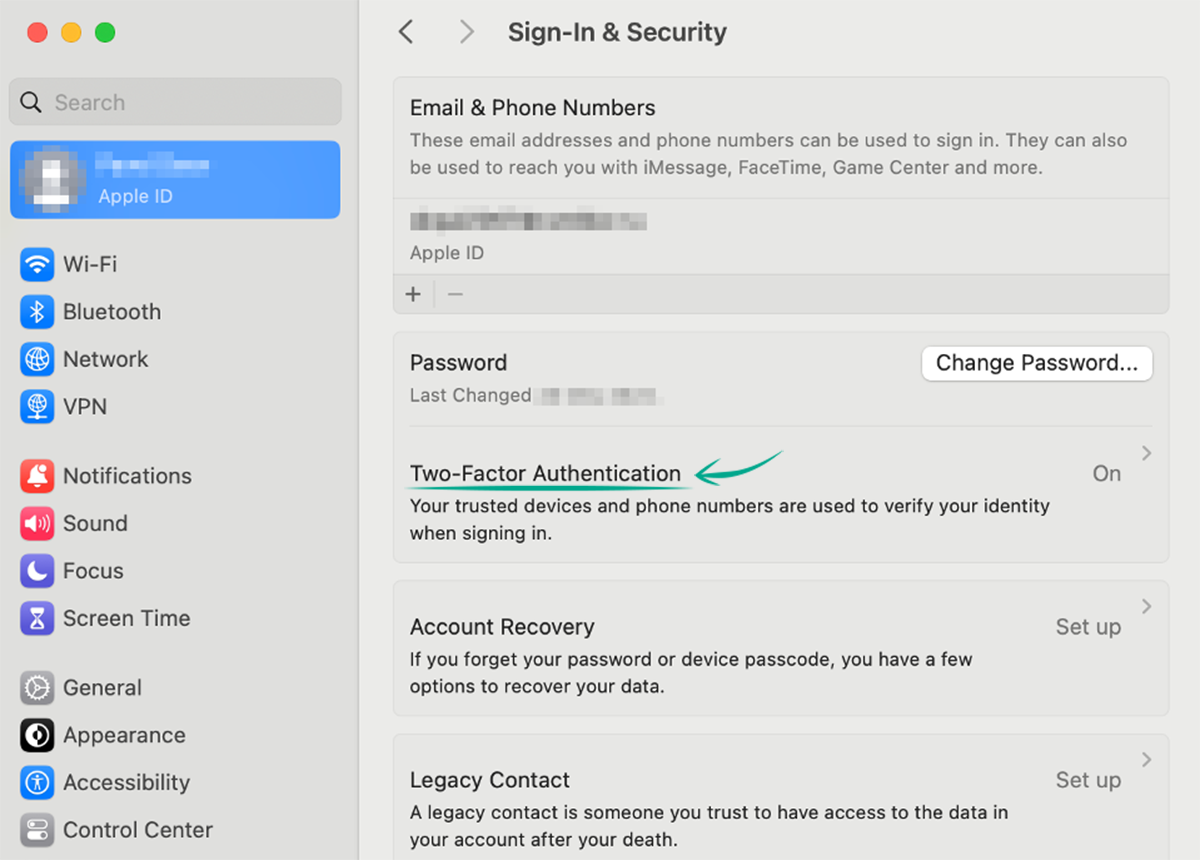
- Click Continue;
- Enter your phone number;
- Select a one-time code retrieval method: Text message or Phone call;
- Click Continue;
- Enter the password for the computer account;
- Enter the verification code you have received on your phone and click Next;
- Click Done.




